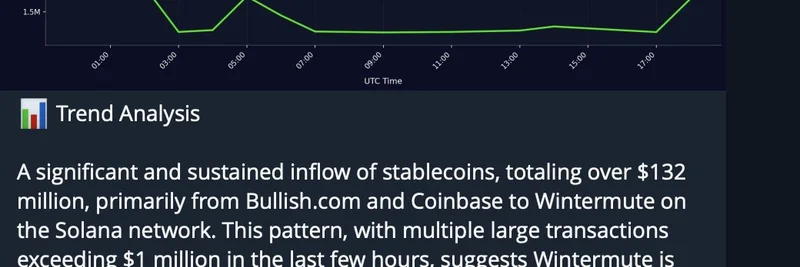In the fast-paced world of cryptocurrency, where projects often hype up big announcements to keep the community buzzing, Pi Network's approach with its $100 million venture fund stands out for being unusually quiet. A recent tweet from BSC News called attention to this, questioning what happened to Pi Ventures after its splashy launch earlier in 2025. For those unfamiliar, Pi Network is a mobile-based crypto project that lets users "mine" tokens via an app without draining your phone's battery – think of it as a more accessible alternative to energy-hogging Bitcoin mining. This tweet links to an in-depth article on BSC News, highlighting the fund's slow rollout and sparking discussions among Pioneers, Pi's dedicated user base.
The Launch of Pi Ventures: Big Promises, Modest Follow-Through
Back in May 2025, the Pi Foundation – the non-profit steering Pi Network's development – unveiled Pi Ventures with much fanfare on their official blog. Funded by a mix of Pi tokens (10% from the foundation's reserves) and U.S. dollars, the $100 million pot aims to back startups that can weave the Pi token into real-world uses. This isn't just about crypto; the focus spans sectors like fintech, e-commerce, social networks, and even generative AI. The goal? To evolve Pi from a mined token into a practical payment tool, tapping into its massive global community of over 19 million KYC-verified users across 200+ countries.
KYC, or Know Your Customer, is a verification process to confirm user identities, which Pi emphasizes to build trust and comply with regulations. By investing in external projects, Pi Ventures hopes to create synergies where these startups use Pi for transactions, boosting the token's utility and adoption. It's a smart play for a project often criticized for slow progress since its 2019 launch, shifting from user growth to tangible ecosystem building during its Open Network phase – essentially, the mainnet where real transactions happen.
First Investment: A Dip into AI and Robotics
Fast forward to August 2025, and Pi Ventures made its debut move by joining a $20 million funding round for OpenMind AGI, a startup crafting infrastructure for humanoid robots. Led by heavyweights like Pantera Capital and including names such as Coinbase Ventures, this investment aligns with Pi's push into cutting-edge tech. OpenMind's offerings include OM1, a universal OS for robots, and the FABRIC protocol for secure machine collaboration – think self-driving cars or smart manufacturing where blockchain like Pi could handle payments or identities seamlessly.
Interestingly, this participation wasn't blasted through Pi's official channels like the @PiCoreTeam account or blog. Instead, it surfaced via third-party reports, leaving some Pioneers scratching their heads. The exact amount Pi chipped in remains undisclosed, but it signals intent to position Pi in booming fields like AI robotics, potentially turning the token into a backbone for future tech economies.
Community Buzz: Excitement Mixed with Frustration
The BSC News tweet captures the sentiment perfectly: announcements have been "few and far between." In the thread, replies range from defensive ("They still post bro, stop the fud") to spam, but it echoes broader community chatter on platforms like Reddit and X. Some users are thrilled about the AI pivot, seeing it as a way to elevate Pi beyond meme-like hype – yes, Pi's viral, app-based mining has meme token vibes with its grassroots spread, much like Dogecoin's early days. Others worry it's distracting from core network upgrades, like enhancing mainnet features or expanding token utility within the Pi ecosystem itself.
FUD, short for Fear, Uncertainty, and Doubt, is crypto slang for spreading negativity, often unfounded. Here, it's not entirely baseless; with no other investments announced by October 2025, questions linger about the fund's pace. Pi Ventures operates like a traditional Silicon Valley VC firm, vetting applications via a Google Form and only deploying capital to top-tier projects. This deliberate approach might explain the silence – no rush to spend the full $100 million if the right opportunities aren't there yet.
What This Means for Meme Tokens and Broader Crypto
As a platform like Meme Insider, we're all about decoding how viral projects like Pi fit into the meme token landscape. Pi isn't your typical pump-and-dump meme coin; its emphasis on accessibility and long-term utility sets it apart, but the hype around mining rewards and ecosystem funds mirrors the excitement in meme communities. This scarcity of updates could be a double-edged sword: it builds anticipation but risks alienating users hungry for progress.
For blockchain practitioners, Pi Ventures offers lessons in ecosystem building. By blending crypto with fiat and targeting non-crypto sectors, it's a blueprint for turning meme-ish virality into sustainable growth. Keep an eye on Pi's blog and X for future reveals – or check back here at Meme Insider for breakdowns on how these moves impact the wider meme token world.
In the end, while the quiet might frustrate, it's a sign Pi is playing the long game. If more investments follow suit, blending AI, robotics, and blockchain, Pi could redefine what a community-driven token achieves. Stay tuned, Pioneers – the next big update might just be around the corner.




